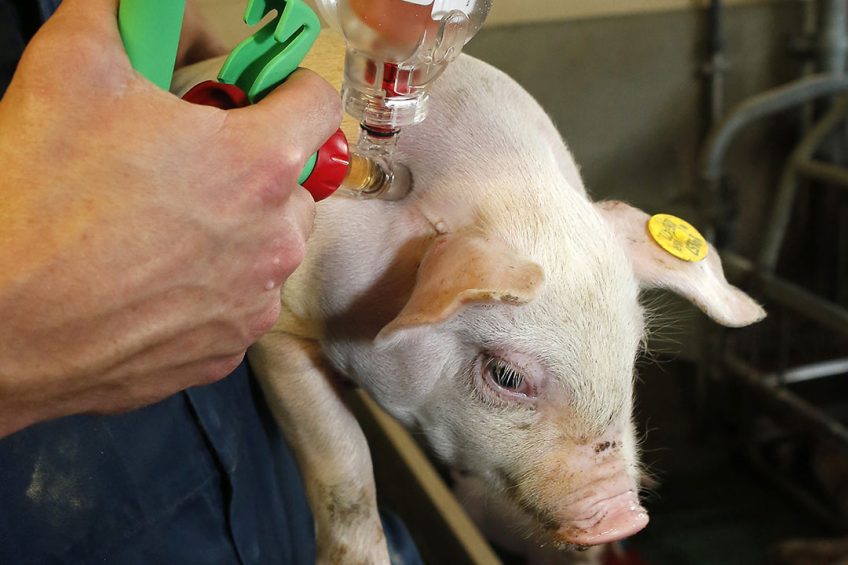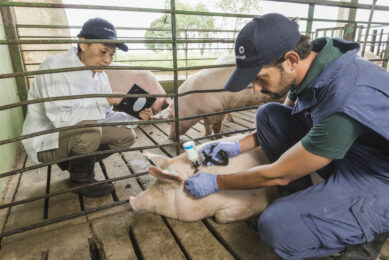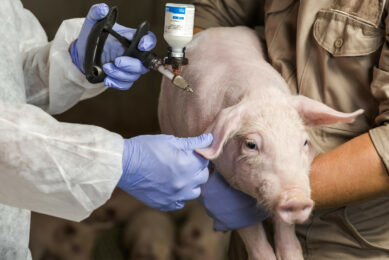Maximising a mycoplasma control programme

Mycoplasma hyopneumoniae (M. hyo) is the causative agent of Enzootic Pneumonia in pigs and one of the primary pathogens of the Porcine Respiratory Disease Complex (PRDC). M. hyo is probably the most frequent bacterial respiratory infection in pig production and continues to be economically significant worldwide.
Most farms in the relevant pig producing countries are chronically infected with M. hyo. Without adequate control, the consequences of this infection will be economically significant: reduced average daily weight gain with a prolonged time to market, reduced feed efficacy, increased susceptibility to other respiratory infections, increased medication costs and higher mortality.
The control of M. hyo is challenging
Many factors are influencing the severity of the disease, which complicates interventions. Besides general principles for all disease control (management, hygiene and biosecurity), 3 key areas need to be addressed:
- gilt development and introduction,
- sow herd immunity
- health status of the herd (including possible secondary pathogens like PRRS and influenza).
Another important factor to consider are the bacteria themselves: M. hyo causes a local infection in the lung and compromises the mechanism to control and eliminate pathogens from the airway.
The lung represents one of the open areas of the body so that the immune system is not activated as long as pathogens stay on the surface. Most of those pathogens are eliminated by the ‘cleaning activity’ of the ciliated epithelium (see Figure 1) that lines the lung airways, before they can start to cause damage: some cells of the epithelium produce mucus in which pathogens and other substances are trapped and the hair-like cilia transport this contaminated mucus out of the lung.
Figure 1 – Ciliated epithelium of the lung (A: intact cilia, B: destroyed cilia).

However, M. hyo intervenes just here – it attaches to these cilia and destroys them so that this cleaning function of the lung is compromised.
M. hyo vaccines have limitations
As soon as a pathogen invades the body, the immune system is quickly activated and in case there is already immunity from vaccination or previous infection, the immune system is so fast, that pathogens are usually eliminated before causing damage. M. hyo, however, leads to a local infection and is not believed to be invasive early after infection, which makes the immune response more challenging for the pig.
All major current vaccines against M. hyo are killed vaccines given intramuscularly that stimulate systemic immunity. It seems that the immune system does not realise M. hyo is present as long as it stays in the mucus, but has not yet attached to the cilia and ‘invaded’ the body, so that also immunity from vaccination is activated after there has already been some damage to the lung. M. hyo vaccines are the most important tools for controlling M. hyo – however, they cannot currently prevent infection or colonisation or eliminate lung lesions or clinical signs completely.
To overcome these limitations, all available tools should be considered to support vaccines, which focus on maximising immunity and minimising exposure. This means, it is necessary to have a close look at the M. hyo infection chain, see Figure 2.
Figure 2 – Links in the M. hyo infection chain.

Protection of piglets by vaccination (maximising immunity) is the primary step and most common tool to control M. hyo. The importance of gilt acclimation has been picked as a central theme more recently and discussed extensively. But what about the sow herd?
The sow herd has to be included
It is well known that early colonisation of M. hyo in piglets is mainly due to transmission from gilts, especially when acclimation of naive gilts coming from genetic multipliers has been insufficient. Shedding from sows, however, is a controversial topic for swine scientists. Some researchers are convinced that sows have a stable immunity so that they cannot be re-infected or at least will not shed M. hyo after exposure.
Other researchers were able to demonstrate that there is also shedding from older sows but it is unclear if those shedding sows were shedding from a re-infection or represented a subpopulation that was infected recently for the first time. Nevertheless, early colonisation of piglets may have a negative effect on a later M. hyo disease severity in the herd.
Vaccination can stabilise sow herds
More than ten years ago, already some reports showed that sow herd vaccination has a stabilising effect on M. hyo infection and severity in piglets. Recently published data from
Ghent University, Belgium, by Dr Ioannis Arsenakis and colleagues demonstrated that sow vaccination, in addition to piglet vaccination, can reduce M. hyo transmission from sows to piglets and reduce M. hyo related lung lesions seen at slaughter.
These researchers primarily investigated M. hyo shedding and antibody reactions in gilts and their litters after whole sow batches were immunised pre-farrowing and their litters were followed up until slaughter.
Beneficial for all M. hyo positive farms?
Piglet vaccination to reduce the economic and clinical effects of M. hyo continues to be the most important disease control measure that can be applied. Positive effects of sow vaccination with M. hyo have been observed in farms with a moderate colonisation rate in piglets at or shortly after weaning – however, data are limited up to now.
In addition, it is still unknown if the positive effect is due to a significant reduction in shedding or if the more relevant effect is the transmission of a highly efficient maternal protection from sows to piglets. Dr Arsenakis and co-workers demonstrated that piglets from vaccinated gilts had a lower risk to be colonised at weaning, but they could not demonstrate that vaccination clearly reduced the number of shedding gilts. On the other side, this study did not measure the quantity of M. hyo that was shed, which may have been significantly reduced in vaccinated animals.
However, these studies demonstrate that vaccination significantly increased the number of gilts that had M. hyo antibodies at farrowing and the number of piglets that had antibodies at weaning. Even though circulating antibodies do not directly correlate with M. hyo protection, they indicate in these studies that there has been a vaccine induced immune response to M. hyo in vaccinated sows and transfer of maternal immunity to piglets.
Therefore sow vaccination may be a valuable M. hyo control option in farms that have evidence of M. hyo instability in the breeding herd, indicated by a high colonisation rate in piglets at or shortly after weaning or a high rate of variation in the antibody status of sows.
References available on request.











